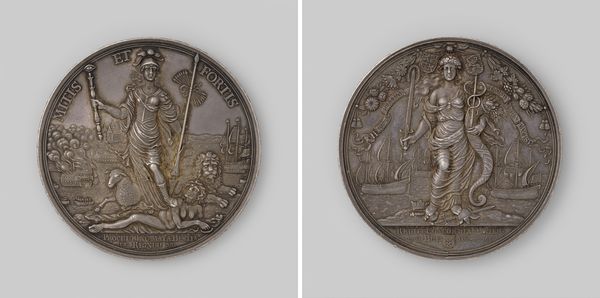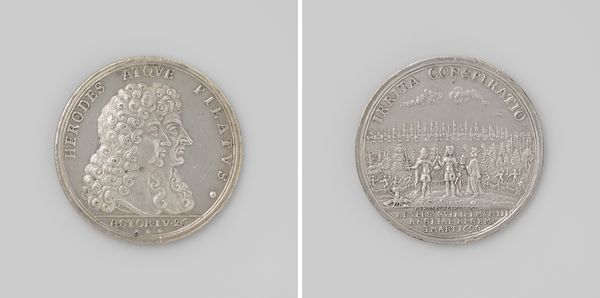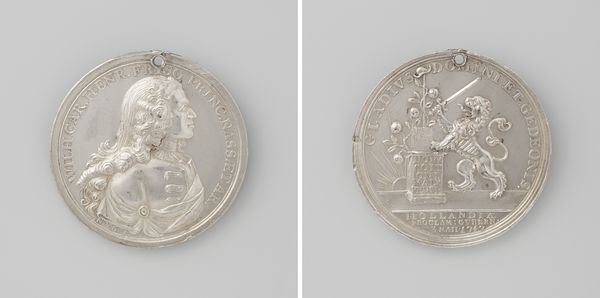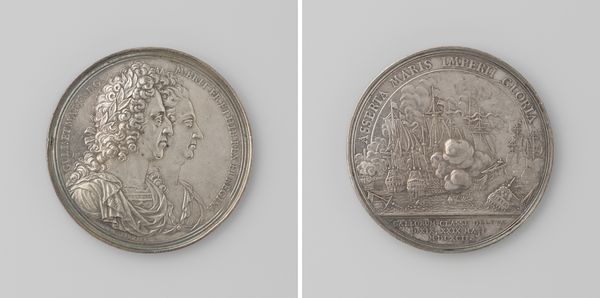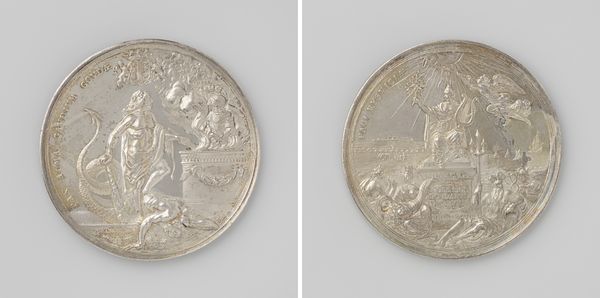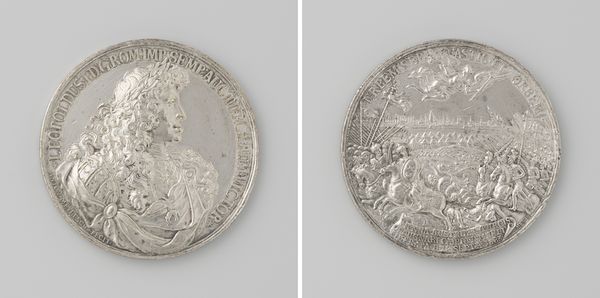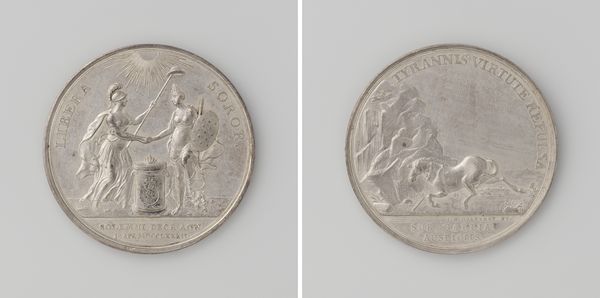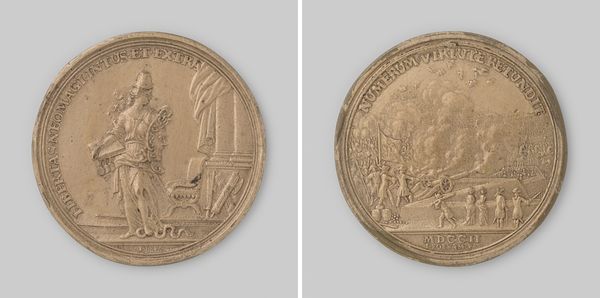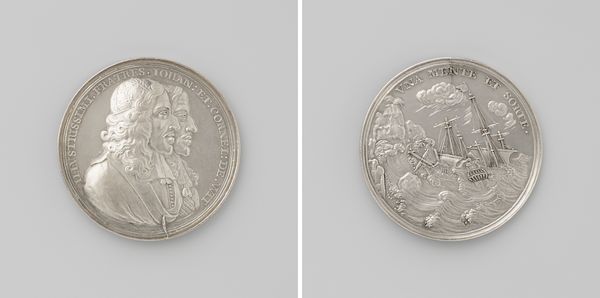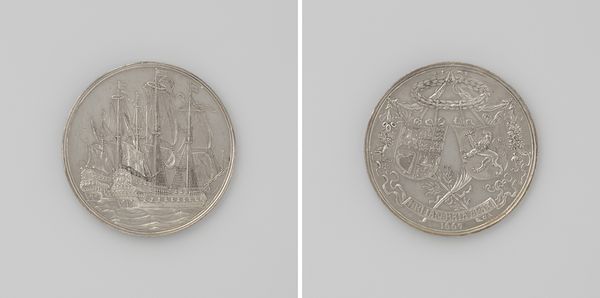
Vrede van Breda en vernietiging van de Engelse vloot bij Chatham (Mala Bestia-penning) 1667
0:00
0:00
print, metal, relief, sculpture, engraving
#
portrait
#
baroque
# print
#
metal
#
sculpture
#
relief
#
sculptural image
#
sculpture
#
history-painting
#
engraving
Dimensions: diameter 7.2 cm, weight 123.83 gr
Copyright: Rijks Museum: Open Domain
Curator: It’s quite striking, isn’t it? I’m immediately drawn to the sharp contrast and depth of the engraving. Editor: Indeed. What we are looking at here is a medal crafted in 1667 by Christoffel Adolphi, commemorating the “Peace of Breda and destruction of the English fleet at Chatham.” Curator: The details are incredible, considering it's metal! You can see so much labor was involved to carve this image out with all the subtle textural elements. But tell me, what does the defeat of the English fleet represent within its socio-political landscape? Editor: It speaks to the shifting power dynamics of the era, doesn't it? This event marked a significant moment of Dutch ascendancy, asserting their maritime strength, as depicted by the allegory of Dutch victory standing triumphantly. She’s stepping on what appears to be John Bull as she raises her staff to the sky. And you see ships sailing in the background. Curator: It’s also worth examining through a postcolonial lens. We see this imagery representing the triumph of the Dutch Republic but from other perspective it’s another depiction of Western dominance, and how the material gains from sea trade impact the colonial landscape. The medal is literally struck with this claim to power. Editor: Absolutely. And consider the material itself - the choice of metal; how it carries symbolic weight. It’s enduring. Permanent. An assertive claim that extends through material form. The act of minting this for mass production also played into the politics and economic gains the Netherlands gained after signing the Peace Treaty of Breda. Curator: I am reminded of current conversations about memorialisation. Who gets to tell the story and whose stories are remembered? A fascinating discussion to have in relation to even something small like this object. Editor: Very much so! I’ve now been looking closer, and its clear how the conditions in which materials are forged often play out in the symbols used on its surface! Curator: This makes me ponder how it encourages one to question dominant narratives even on celebratory keepsakes like these. Thanks for this! Editor: The dialogue helped make sense of a lot of elements as well! The materiality informs so much about how an art object gets embedded in the historical record.
Comments
No comments
Be the first to comment and join the conversation on the ultimate creative platform.



